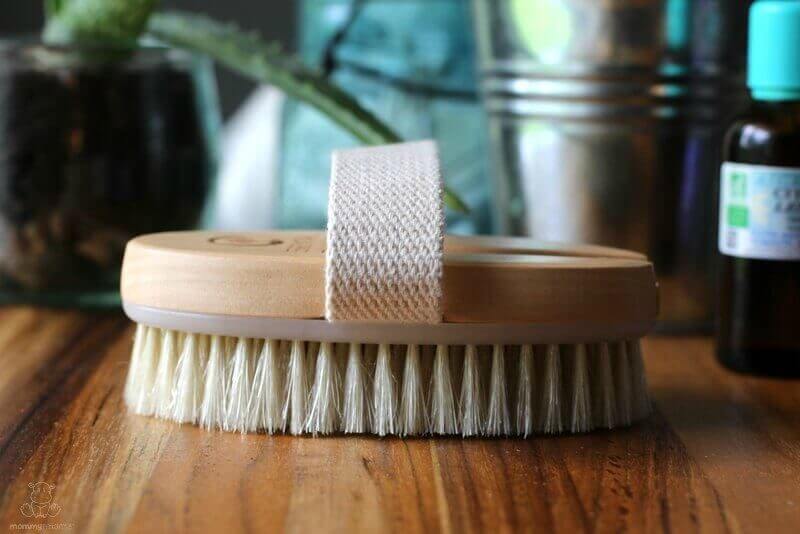
The first time I heard about dry brushing, all I could think was “Why are these people brushing their skin? I’m doing good to brush my teeth and change out of my yoga pants.” Never would I have guessed that it would become one of my favorite wellness practices, but it absolutely is.
Although it’s most often recommended for increasing circulation and reducing the appearance of cellulite, the benefits of dry brushing are far more than skin deep. This ancient technique is also considered helpful for supporting detoxification, immune function, and more.
Before we dive in, I want to mention that none of these statements have been evaluated by the FDA, this article is not medical advice, and it is not meant to diagnose or treat any condition. Now that we’ve got that out of the way, let’s dive in.
So, what is dry brushing?
Although it’s only recently become popular in wellness circles, dry skin brushing has actually been around for 5,000+ years. Known as Gharsana in Ayurvedic medicine, it’s pretty much exactly what it sounds like. (1) Using a body brush with firm, natural bristles, you brush your entire body with circular strokes and/or long sweeping strokes to increase circulation, move lymph fluid, exfoliate your skin, and more.
If you’re not familiar with Ayurveda, it translates from Sanskrit as “The Science of Life” and is one of the oldest systems of healing in the world. Ayurvedic medicine has given us creamy moon milk for restful sleep, skin brightening turmeric masks, stress relief through adaptogens like ashwagandha, and even oil pulling, which modern research confirms can reduce oral bacteria that contributes to tooth decay, gum inflammation, and bad breath.
From the Ayurvedic perspective, dry brushing supports health by stimulating the lymphatic system, which “is a network of tissues and organs that help rid the body of toxins, waste and other unwanted materials. The primary function of the lymphatic system is to transport lymph, a fluid containing infection-fighting white blood cells, throughout the body.” (2)
Because it has beauty benefits as well, dry brushing is often included in treatment packages at day spas. However, it’s easy and far more inexpensive to do at home, and you have the ability to do frequent sessions.
Benefits of Dry Brushing
If dry brushing isn’t part of your wellness routine, here are four reasons to give it a try.
#1 – Detoxification
When you hear the phrase “circulatory system,” do you think of your heart, veins and arteries? Most of us do, even though our bodies actually have two circulatory systems.
Unlike the cardiovascular system which is pumped by the heart, our lymphatic system is a passive circulatory system that relies on movement and respiration to “pump” immune cells throughout the body while removing:
- Pathogens – Bacteria, viruses, and certain fungi (3)
- Toxins – Environmental pollutants, metabolic byproducts, heavy metals, etc. (4)
- Abnormal cells – As we’ll talk more about in the next section, the lymph system contains lymphocytes that destroy damaged cells. (5)
The waste removal function of our lymphatic system plays a huge role in our body’s ability to detoxify. Because it’s a passive circulatory system, it depends on frequent movement to keep things flowing.
In the past, we activated our lymphatic system by moving all throughout the day – walking long distances, manual labor, etc. Even though I exercise or walk nearly everyday, I still don’t move as much as my ancestors did. For that reason – and because it has some lovely skincare benefits, too – I focus on supporting lymph flow through daily dry brushing.
#2- Immune Function
When most of us get an infection like a wound, the infection stays localized to that area. That’s because contrary to the common perception that most infections are in our blood, they’re often in our tissues.
In those cases, the body uses lymph fluid to draw the bacteria or virus into a nearby lymph node, which is standing by with B and T cells. Those cells are part of our adaptive immune system, which means that they are able to adapt to address the specific infection rather than mount the generalized response you see from macrophages.
As mentioned above, the lymphatic system also monitors for (and neutralizes) abnormal cells before returning them to our bloodstream so that they can be expelled from the body via one of our detoxification pathways – in this case, our liver and kidneys. (5)
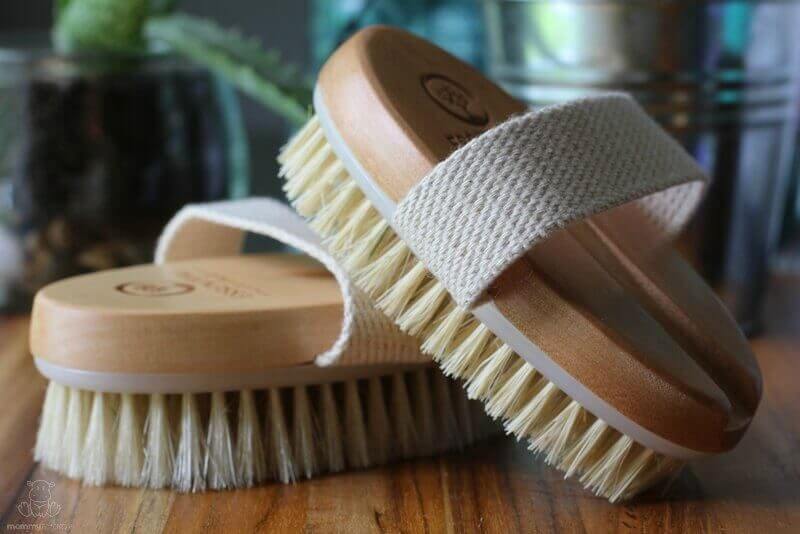
#3 – Softer, Smoother Skin
Dry brushing exfoliates away dead skin cells and encourages the production of new cells. When dry skin is sloughed off, skin is able to more readily absorb moisturizers such as massage oil or body oil.
Dr. Murad, dermatologist and author of The Cellulite Solution, also recommends dry brushing to improve the appearance of cellulite. He describes it as a ” triple action method” that stimulates blood flow and the growth of young healthy skin cells, helps with absorption of skincare products, and helps to move waste that can contribute to tissue damage if it sits around too long. (More on that here.)
#4 – May Increase Feelings of Well-Being, Rejuvenation & Relaxation
We often spend all day go-go-going, juggling to-do lists and schedules – and sometimes this mental load can keep us “in our head” and feeling disconnected from our physical selves.
Spending a few minutes dry brushing at the beginning or end of each day can re-establish that connection and help us feel more grounded.
If that sounds a little woo to you, here’s why it works: Our skin is rich in nerve endings that are connected to our autonomic nervous system (ANS). The ANS has two modes – sympathetic (fight or flight) and parasympathetic (rest and digest).
Dry brushing engages with our autonomic nervous system by activating the nerve endings in our skin. The effect is similar to massage, which some people find relaxing and others find invigorating.
Choosing Your Dry Brush
First, make sure you use a brush with natural bristles. I’ve purchased more than a few because apparently I’m the Goldilocks of dry brushes. Here are the ones I currently recommend:
- This is a great starter set. It’s well made and comes with a stiff brush and a softer one, both of which I love. This set is not waterproof and will mold if you use it in the shower.
- This brush has longer, firmer bristles than you’ll find with most brands, which makes it a great choice for people who already have a solid dry brushing routine. I am able to feel more movement when I use it, which I love. Because of how stiff the bristles are it’s probably not a good starter brush for people who are new to the practice or have sensitive skin. Like the set above, this brush is not waterproof and will mold if you use it in the shower.
- This set of two dry brushes (firm and soft) is water resistant and can be safely stored in the shower. Some people (including me) like to brush right before showering so having them nearby is a great visual reminder. I haven’t had them for very long but so far I’m very happy with them.
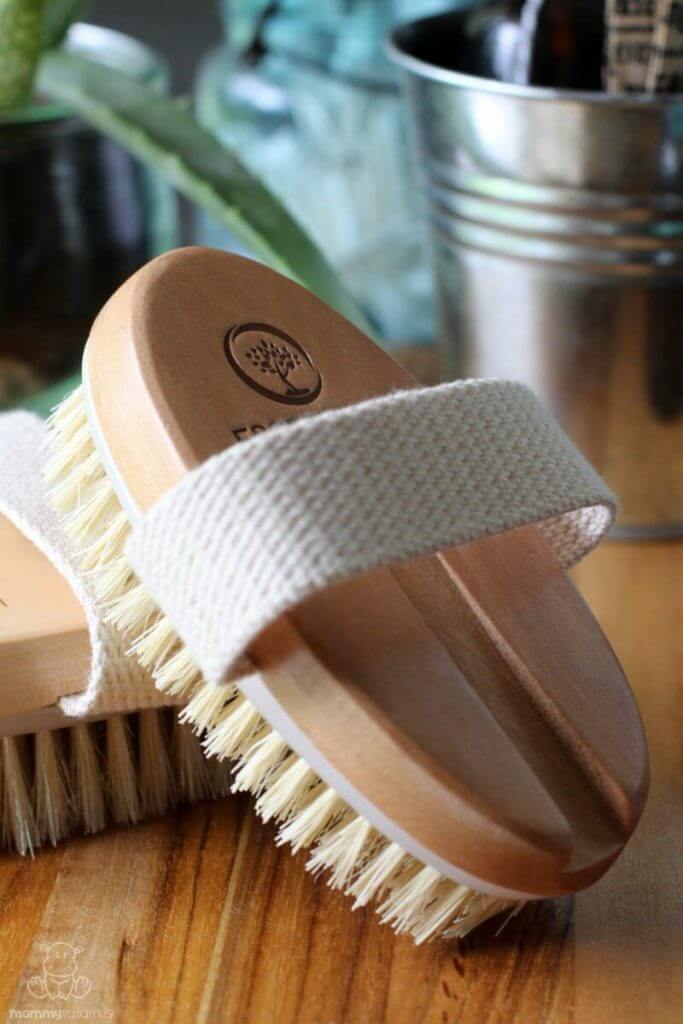
How to dry brush
Before getting started, take a moment to notice whether or not you’re thirsty. It’s important to be well hydrated so that metabolic waste and toxins are moved toward the body’s exit systems. It’s also a good idea to pay attention to hydration levels after dry brushing. It’s not necessary to guzzle water, just listen to your body. (I also recommend adding a pinch of salt and a squeeze of lemon to water in order to improve hydration levels.)
1. Brush toward your lymphatic drains.
Now, to the actual technique. Most dry brushing tutorials say that you should brush toward the heart. While that approach can be helpful for improving skin softness and texture, there’s another approach that I believe may be more helpful for improving lymph flow. It’s based on the techniques used in Manual Lymph Drainage Massage, which was developed by Emil Vodder PhD and his wife, Estrid Vodder, ND.
To understand the benefit of this approach, imagine you have a bag full of cake frosting and the tip is clogged. If you try to apply pressure by squeezing the very back of the bag forward you might eventually release the clog, but it will be more difficult and you have less control over how much frosting is released. It’s better to start by opening up the tip using pressure applied close to the area, then working from there.
Although brushing toward the heart does basically lead lymph toward the lymphatic watersheds (drains) in the body, it assumes they’re already open which is not always the case. In the video below, a nurse explains how to use circular motions near the thoracic duct to open the primary watersheds at the beginning of a session. She then details her entire process, which is the same one that I use.
Please note that in sharing this video I am not endorsing all the views expressed. I do, however, believe it contains valuable information that was very generously shared, and am very thankful for that. 🙂
2. Shower and/or hydrate your skin
If possible follow with a shower and moisturizer like whipped body butter, massage oil, or lotion.
When and how often should I dry brush?
Most people include it in their morning routine because they find dry brushing to be energizing. However, others find it relaxing and prefer to do sessions in the evening, so do what works best with your schedule.
Regarding frequency, some people dry brush a few times per week, while others dry brush daily. It’s best to start slow – a couple of times a week – and work up to a point that feels right for you.
Is dry brushing right for everyone?
Like with most things, there is no “one-size-fits-all” approach to wellness that works for everyone. Some skin types are more sensitive than others, so whether or not you love dry brushing may be influenced by that.
Personally, I didn’t love it right away. My brush was too soft and it felt like rubbing a limp noodle on my skin. It took some time to find the right level of brush firmness and applied pressure for me. If you don’t love it right away, it may be worth experimenting to see if there’s a combination that works better for you.
There are some instances in which dry brushing should be avoided, though. People with eczema, psoriasis, wounds, sunburns, or varicose veins, for example, should avoid dry brushing over affected areas.
Other ways to naturally support detoxification
This article was medically reviewed by Dr. Mariza Snyder, a functional practitioner. As always, this is not personal medical advice and we recommend that you talk with your doctor.
Do you know someone who could benefit from dry brushing? Click any of the buttons below to share.
FREE Ebook: DIY Body Care Gifts Made Simple
Do you want to give gorgeous, handcrafted gifts for family and friends, without spending a bunch of time on them?
Then I’d love to give you a free copy of DIY Body Care Gifts Made Simple – my step-by-step guide to making gorgeous handcrafted gifts without stressing yourself out – as a gift for signing up for my 5newsletter. I’ll show you how to make vintage labels, luxurious lotion bars, lip balms, sugar scrubs, body sprays and more like a pro. Sign up for my newsletter and you’ll be redirected to the download page immediately!
About the authors: This article was co-authored by Heather Dessinger and Dr. Lori Valentine Rose (PhD). Dr. Rose, PhD is a college biology, nutrition, herbal, and wellness instructor, Certified Nutrition Professional (CNP), Registered Herbalist with the American Herbalist Guild, and is Board Certified in Holistic Nutrition. She created, developed, and instructs the Hill College Holistic Wellness Pathway, the most thorough, affordable, degreed wellness program in the country. She loves spreading love and light, and helping others feel awesome on the inside and out so they can live their dreams and make this world more awesome!
Sources
1. Caldecott, Todd (2006) Ayurveda: The Divine Science of Life
2. Live Science (2018) Lymphatic System: Facts, Functions & Diseases
3. U.S. National Library of Medicine. Lymph System.
4. Smithsonian Magazine (2017) Tattoo Ink May Stain Your Lymph Nodes
5. Cleveland Clinic. Lymphatic System.

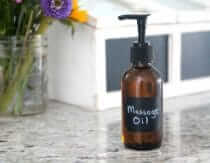
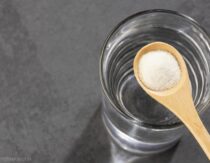
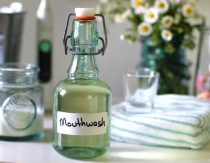

Is dry brushing safe while nursing?
Also wondering about this?
So funny! I was also wondering!! Popular question!
I dry brushed while I was nursing and have done this almost daily for many years, even during pregnancy.
Because dry-brushing supports the health of your lymphatic system and your skin, they will better be able to do their detoxification jobs, which they always do regardless of if you’re pregnant or breastfeeding. You will want to keep your lymph flowing during pregnancy and while breastfeeding to ensure your body is detoxifying effectively. I have done a quick search to see if experts can back up the safety of dry brushing while pregnant, and wasn’t able to find any concrete evidence for or against. So, it will be up to you and what you’re comfortable with.
There are other ways to improve lymph flow though, the easiest of them is exercise. Our lymphatic system is much like the cardiovascular system, however it does not have a heart to pump the fluid. Lymph fluid is moved through the body by the contraction and relaxation of our smooth muscle tissues. So moving your muscles will have great benefit on your lymphatic system and of course is safe to do while pregnant and breastfeeding.
I hope this helps 🙂
Thanks for this post! I’ve always believed that movement is the key to a healthy lymphatic system, but I’ve always done it through physical activity (mostly yoga). I’m looking forward to trying this technique and I appreciate the informative post on it.
I used to dry brush my son when he was little. It was taught to us by an occupational therapist to treat his sensory disorder. The way she explained it to me is that energy gets built up in the nerves & you brush that energy out. But she taughts us yo brush from the top down,head, down arms & hands, down back & front, legs, & bottom of feet.
We also brushed for sensory issues with our daughter. What a difference it made! It was to be done downward and specific amounts. She can now wear long sleeves, long pants and the most difficult- socks!
Thank you for this article! I have been dry brushing for a while now, and did not know about it being helpful in balancing hormones. I have noticed most of the other benefits you mentioned, and it also helped my stretch marks to fade!
Although I’d heard of dry brushing, this is the first article I’ve read. I can imagine that anyone who is physically active likely has a free-flowing lymphatic system, but those of us who would rather read a book than jog might benefit significantly. Pinning and adding to my health objectives. I’ll be interested in the outcomes. Thank you.
Thanks for sharing very cool.
Very informative, I’ve been meaning to start this! I just have to do it this week.
Thanks Heather! This was the such an interesting read. I’ve had heard some surface level discussions about this before, but never a blog post this in depth.
I really enjoyed, the part in the video that briefly touched on the benefits in regards to breast cancer. Super interesting!
Really got me curious and! I’ll be giving this a try for sure.
I’ve been dry brushing for a few years, but always worry I’m not going in the right directions. Watching the video helped a little, but my memory is the pits. It would be sooooo cool if you’d consider publishing a chart of a human figure and arrows showing direction of brushing. It would also be prudent if we could see actual different types of brush strokes (straight, circular, etc) for the different body parts (areas). Thanks for your consideration.
This seems like an excellent idea!
It would be awesome if someone more tech savvy than I could use a diagram of the body and make a printable with the sequencing cited above for us newbies! Thanks for the information.
Here’s a pretty accurate guide / picture for dry brushing I found.
https://www.smartlivingnetwork.com/uploads/20140303110347lymph-flow-guide.jpg
I have been brushing for years – but incorrectly. I too would love a chart. It would be tremendously helpful. Thanks for the information.
FYI, the ebook is missing pages. The important page (127) is missing on my version. Checking into seeing why this is. SO, the video is VERY important to watch to learn the technique!
Also, I’ve just heard that Amazon bought Whole Foods. Amazon is pro-military and has been shown recently to have very toxic “organic” labeled spices. Do your research before buying anything from Amazon! And support local businesses before buying from Amazon, even if it is more expensive!! Also, Google is to be joining with Facebook, Wikipedia and Gmail to keep health information from the general public. Has anyone else heard this?
After looking into the page numbers, my husband pointed out that Amazon Kindle doesn’t use page numbers. So, when looking for the brushing technique in the ebook, go to the index and go to chapter 4 under “the main lymph clusters”. On my phone it is 688.
I started dry brushing some years ago. But I was using a wrong technique: dry brushing in circular movements starting from the feet to the head. I did it in the morning before taking a shower. However, since I started this year working out in the morning I quit dry bushing but I’d love to keep doing it.
So, can this be done at any time; not only in the morning? And I am guessing I should take a shower afterwards, since I imagine it is better for removing any skin dead or whatever else may come up from doing this. Not that I wouldn’t like to take a shower twice a day but I’d prefer to use the time for something else AND doing it in the morning instead of in the night. Or perhaps it would be better to wait for my skin to be completely dry after working out in the morning and then do the dry brushing? Any thoughts or recommendations?
Hi Heather,
Checked the link. Your brush is out of stovk. Can you recommend something else? Or a different place I can purchase it?
Thrive Market is where I got mine…my online grocery store
Very helpful and well detailed, thank you
I will start getting benefits from my brushes!
I have an 8 year old with sensory processing disorder. Would it be safe and good to start dry brushing her in the manual lympth drainage massage Way? She’s been too sensitive to try it with her therapist but she would do it with me and I would like to start her off with the right technique. She and I both have detox issues genetically.
I’m unable to give advice regarding specific situations but in general it’s considered safe so it’s definitely something worth discussing with your care provider 🙂
Hey, I can’t seem to find instructions how to open drains before starting brushing. Can you share it with us?:)
Hi, I can’t seem to find instructions on how to open drains before starting brushin. Can you share it with us?:)
Hi, I can’t seem to find instructions on how to open drains before starting brushin. Can you share it with us?:)
The technique I use is described in this book but you can also use the method shown in the second video in this post.
Thank you for this information! Is there a visual that we can reference for the stroke pattern?
Regarding the dry brushes you are using currently. Are they the ones shown in the picture right below the dry brushes article. What is the brand in the picture as that is not what comes up in the article. And the reviews are not very good about the brushes in the article. They are a round brush and the picture is oval brushes. Please clarify what is what.
Thank you.